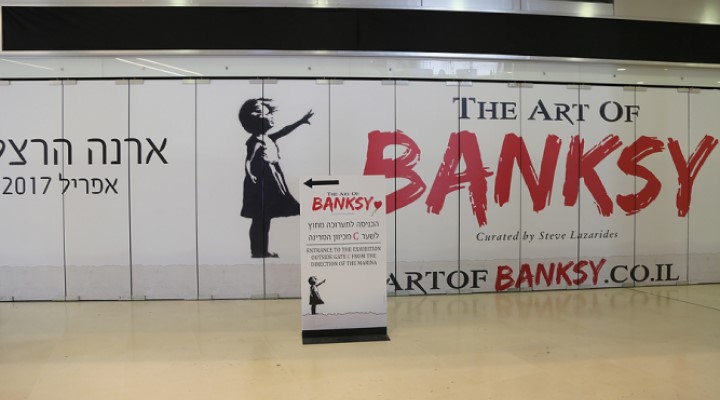Urban art has matured over the last few decades, from landscape defacing tags and graffiti to witty and loved street & urban art. Banksy is one example of a modern-day, celebrated street artist. Over the last 30 years, he has gone from being called “a vandal” by New York Mayor, Michael Bloomberg, to seeing his artworks sell in the millions of dollars.
Banksy clearly knows a thing or two about brands. He uses mystery & spectacle like no other. He has staged many public stunts, such as his lampooning “Dismaland” theme park in England, to his self-destroying “Girl with Balloon” painting – sold at auction for nearly $AUD2M, it shredded itself in full public view before its new owners could take it home. He has managed all this, including making more and more public artworks while keeping his identity unknown (which is no mean feat in this day and age).
Banksy’s Brand is the envy of many, but his trademarks are not
Trademarks are powerful business tools when used properly. They are used by organisations as a badge of origin for their products and services. However, their real purpose is to make sure there is no confusion by the buying public as to where their purchase has come from. This is why, for trademarks to work properly, they need to be distinctive, not descriptive. A trademark owner has a legal right to stop unauthorised use of their trademarks by a third party selling the same or similar goods or services. Most of the time trademarks will be words, but they can also be colours, smells, shapes, and… graphic representations (like logos)… which brings us back to Banksy.
Use it or lose it
In an attempt to stop his art from being reproduced on t-shirts and birthday cards, Banksy registered several of his artworks as trademarks. But this has not exactly gone to plan.
One of the main issues with his trademark registrations is their use by Banksy. And here is the important bit… to keep your trademark registered, you must use it as a trademark for the goods or services with which it is registered. Banksy registered several of his artworks as trademarks for selling art supplies, clothing, books, music, carpets, education and training services, and many more things. The problem is, he (and his company “Pest Control Office Limited”, the owners of the trademarks) were not using any of these trademarks as trademarks for any of the goods or services for which they were registered – he has never sold any t-shirts, rugs or birthday cards with his artworks on them. In fact, one might argue regardless of where he has used his artworks, he has never used them “as trademarks”. He has only used them as a form of artistic expression, not a badge of origin for goods to be sold.
Unfortunately for Banksy, the European Union Intellectual Property Office thought so too. Despite being registered as trademarks, when greeting card company “Full Colour Black” applied for Banksy’s registrations to be invalidated on grounds of “bad faith” (for lack of use as a trademark), they were successful and several of the registrations have been or are being removed.
Stick to your knitting
To save yourself both time and money, don’t get too greedy and attempt to register a trademark you have no intention of using, or for goods or services for which you have no intention of selling. Likewise, don’t try and use a trademark as a way to protect something that can’t be protected or should have been protected using a different intangible asset (a mistake we see many companies making)
Instead, if you want to ensure your trademarks are valid and that you will be able to enforce your rights if someone infringes your trademark, then make sure the trademarks you are registering will be used for the goods and/or services for which they are registered and in the country where they are registered. What is meant by “use as a trademark” will typically mean being on related goods (e.g. on labels), in advertising, on collateral or even invoices.











